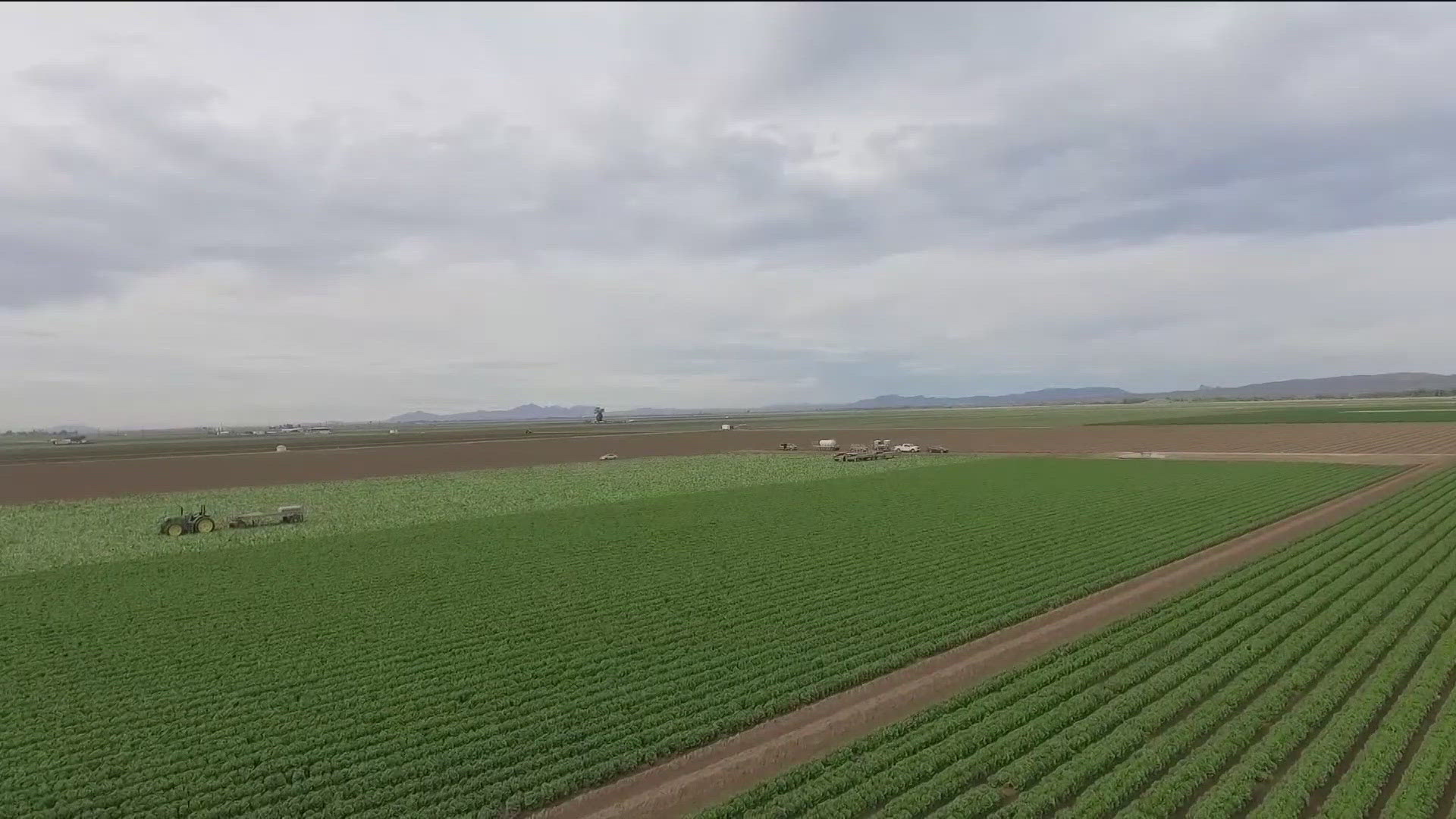SAN DIEGO — Plants not only bring life to our planet as food, feed and fiber, they are an efficient tool when it comes to taking carbon dioxide out of the atmosphere. Now with the help of artificial intelligence, scientists are retrieving faster data to help engineer ideal plants in an effort to combat climate change.
"What we've now done is taken all the images and pictures that they take of the plants that are growing inside of these gels and use SLEAP to capture the structure and shape of those plant root systems," said Talmo Pereira, PhD, Principal Investigator at the Salk Institute for Biological Studies.
It is spelled S-L-E-A-P and stands for Social LEAP Estimates Animal Poses. It was initially designed to track animal movement in the lab like mice, bees, flies and gerbils. This software uses the ability of computers to analyze images of animal features and AI technology to train computers to absorb information like a human brain.
"So, if you've seen behind the scenes footage of people, of actors, wearing all these big motion capture suits with these balls and little dots, the principle is the same except that we do it without a suit," explained Pereira.
Branching out from animal research, sleap-roots, analyzes plant root phenotypes. This data details how deep and wide they grow, the potential size of root systems and other physical qualities with less labor-intensive observations. What used to take more than 10 hours in a day, now takes only minutes with better accuracy.
And these plant roots are ready for their close up, Mr. Demille.
"Unlike previous approaches that rely on the equivalent of, if you imagine, coloring in the inside of a plant as if it were a coloring book, instead we are treating them like a Hollywood actor, just trying to find the points that characterize the shape of its body or its roots," explained Pereira.
This new technology will be used to enhance a plant's natural ability to draw carbon dioxide out of our air, which is a contributing factor to global warming.
"Plants are the world champion of taking carbon dioxide out of the air and putting it into their biomass or even in the soil. And they are more efficient than any machine we have built so far on the world and plants are everywhere," said Wolfgang Busch, PhD, Professor at the Salk Institute for Biological Studies.
With SLEAP, scientists are working towards engineering Salk Ideal Plants, ones with deeper roots that would help combat this and other environmental issues. Wolfgang explains how it works.
"SLEAP then can analyze these pictures and measure the root traits. So, we put this cylinder here in this water bath to avoid, increase optical properties and then we have a big camera lens here that takes pictures of this cylinder. It is illuminated here with an infrared light from the back to increase the picture quality and we can use this automated turntable to take pictures of every angle of the cylinder," explained Busch.
Sometimes there are hurdles in nature that can prevent deep root growth. Note the circular shapes created by the roots of these rice plants. These roots are having a hard time punching through a tough layer in the lower gel that mimics soil, which is a problem if you want to have deep roots. The deeper the roots, the better.
"And we use SLEAP to count the number of roots that have made it through in this hard layer and by looking at 1000s of plants we can find genes that make roots punch through much better," said Busch.
The data collected will be used to help with the development of crops. Yes, gel cylinders and soil are different, but this AI technology will indicate to scientists what they have to measure in the gel system precisely so changes can be made in the soil.
From crop development to combating climate change, this technology presents a key to a flourishing planet.
"We grow plants everywhere, in every culture and on billions of hectares worldwide. So, if we can make plant roots better to store the carbon for long in the soil, by having Salk Ideal Plants for that purpose, we would have removed carbon dioxide from the atmosphere and we would have addressed the cause of global warming and climate change," stated Busch.
Find out more about Salk's Harnessing Plants Initiative here >>
WATCH RELATED: Zero-waste grocery store in North County prides itself on sustainable living

